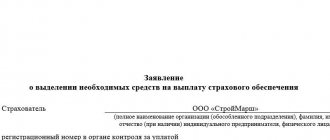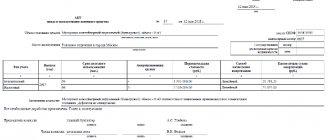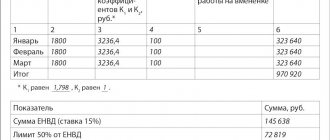Insurance premiums from the Social Insurance Fund against accidents
Pavel Andreev
Journalist, assistant editor
Insurance premiums are mandatory payments that the company transfers to a special account on a monthly basis.
This is monetary compensation to protect the interests of an employee injured at work. Regardless of the fact that payments are regular and made for each employee individually, funds are paid after the occurrence of an insured event.
How the Russian compulsory pension insurance system works
In the Social Insurance Fund, tariffs for accidents in 2021 remain the same as in the previous year, but the administration itself has undergone some changes. Next, we’ll look at the specifics of calculating insurance premiums!
Who is the payer?
Payers of contributions in case of injury are legal entities (enterprises of all forms of ownership) and individual entrepreneurs for their employees. Accrued on the amount of wages.
For employees with whom a GPC agreement is concluded, where the insurance conditions are not specified, the employer is not required to contribute funds.
The list of payments does not include:
- one-time financial assistance;
- sick leave payments;
- severance pay;
- amounts that are paid for damage caused at work;
- some other payments are determined by law.
You can find out in detail about the amounts of payments for which contributions for injuries are not calculated by reading Federal Law No. 125.
Deductions for injuries are made for the following types of income:
- salary;
- premium;
- vacation compensation;
- allowances.
No deductions are made for targeted government payments, expenses for staff development, or payments upon liquidation of an enterprise.
Changes for 2021
The redistribution of functions for accepting contributions has led to the fact that they now have to be transferred to two authorities:
- in the FSS parts relating to sick leave and maternity;
- Individual entrepreneurs continue to transfer money to the Pension Fund and the Compulsory Medical Insurance Fund for themselves.
The settlement procedure is legally established in a special chapter of the Tax Code. This has led to the fact that these contributions are now equated to the movement of budget funds, that is, they are subject to the relevant requirements:
- regarding registration rules;
- including the use of special details.
Where to transfer
Payers are required to pay all contributions described in the Tax Code to the accounts of the relevant branch of the Federal Tax Service:
- at the place of registration;
- at the location of the branch maintaining separate accounting;
- Individual entrepreneurs are guided by the registration address.
Payments should be made for each type of contribution separately (as before). However, in 2021, you need to use the details provided for budget contributions. The injury tax is transferred according to the old rules:
- to the Social Insurance Fund branch where the payer is registered;
- at the location of the separate branch;
- at the place of residence of the individual entrepreneur (charitable only).
Have the deadlines changed?
According to regulatory requirements, the “accidental” fee must be transferred to the Social Insurance Fund account by the 15th day of the month following the reporting month.
FSS tariffs 2021 from accidents
In order for an entrepreneur to find out what rate of injury he needs to pay, he needs to know the main type of activity of the organization. There are 32 classes in total, which include a list of types grouped according to occupational risk classes. Each one is assigned an individual OKVED code.
Order No. 851N has been in effect since January 1, 2017. It defines new classification rules. The type of activity is confirmed annually. In order for the Social Insurance Fund authorities to set a tariff at which the injury rate will be calculated, you must send supporting documents before April 15 of the current year:
- certificate of approved form;
- supporting statement;
- decoding of the balance sheet for enterprises for the previous period. Individual entrepreneurs are not required to provide reports.
Application forms and certificates can be viewed in the appendices to Order No. 55 of the Ministry of Health and Social Development.
In the Social Insurance Fund, 2021 tariffs for accidents range from 0.2 to 8.5.
If the taxpayer does not provide documents, then the FSS will independently assign a professional risk class, and the highest rate is selected - 8.5. Therefore, documents must be submitted on time, because it will be impossible to challenge the tariff, according to the new rules in force this year.
Taxes for pensioners
Determination of the actual amount of obligations to pay insurance premiums “for injuries”
REPORT AT THE CONFERENCE “TAX LAW IN DECISIONS OF THE CONSTITUTIONAL COURT OF THE RUSSIAN FEDERATION”.
Olga Vyacheslavovna Anferova , Deputy General Director for Legal Projects of the Taxes and Financial Law Group of Companies
Ksenia Sergeevna Ananina , Leading Legal Specialist of the Taxes and Financial Law Group of Companies
In almost the absolute majority of cases, they talk about determining actual tax obligations, but the example of the present dispute shows that the issue of “validity” is much broader and deeper.
In fact, it arises everywhere, including when regulatory authorities determine the amount of any mandatory payments, tax or not.
In this report we would like to discuss the application of the principle of “validity of obligations” by the Social Insurance Fund when checking the correctness of the calculation of insurance premiums “for injuries”.
Circumstances of the dispute.
The organization (the policyholder) carries out two types of business activities: furniture production and retail trade in furniture of its own production and household goods, both of its own production and purchased from other persons.
Society in the period 2015 – 2021 submitted to the Social Insurance Fund (hereinafter referred to as the Fund, FSS) documents confirming the main type of economic activity, which it considered “Retail trade in furniture and household goods,” since it was from this type of activity that it received the largest share of revenue.
At the same time, the ratio of production and trade workers was not the same as that typical for organizations that sell their products with two or three managers. The Company has a developed network of retail stores (entered the Company under pressure from the tax authorities in order to avoid accusations of fragmentation), as a result of which the ratio of production and retail employees was:
| Year | Production | Trade (12 branches with several stores each) |
| 2015 | 1113 | 1278 (53,45 %) |
| 2016 | 890 | 1157 (56,50 %) |
| 2017 | 694 | 871 (55,65 %) |
FSS position.
The main activity is incorrectly defined.
For the Company, this is “Furniture Production”, not “Retail Trade”. FSS believes that the Company's revenue from the sale of products of its own production is subject to accounting as revenue exclusively from the production process and cannot be separated separately and attributed to revenue from retail sales.
At the same time, the Fund established that the structural divisions of the Company also sell purchased goods (about 5.66% of revenue).
However, the Fund did not take into account the presence of structural divisions in the Company. He added insurance premiums for injuries to the wage fund of all employees, corresponding to the level of professional risks of production workers - 0.9% (instead of 0.2% for trade). Also, the basis for this was the absence of an application from the policyholder to separate the divisions into independent classification units.
However, taking into account the presence of different types of activities of the Company and separate income from them, the Fund had to separate the structural divisions engaged in retail trade in furniture and household goods, including those purchased from other persons, into independent classification units. Establish separate insurance premium rates for them based on the level of professional risks of their employees.
Rationale.
The legislator provided for the Fund's obligation to establish the actual amount of the Company's obligations to pay insurance premiums, however, due to shortcomings in the mechanisms for their application, the relevant norms are understood by the Funds exclusively in a “budgetary” manner.
Article 4 of the Federal Law of July 24, 1998 No. 125-FZ “On compulsory social insurance against accidents at work and occupational diseases” (hereinafter referred to as Law No. 125-FZ) establishes that one of the fundamental principles of compulsory social insurance against accidents at work and occupational diseases is the differentiation of insurance rates depending on the class of occupational risk.
In this regard, insurance rates are differentiated by economic sector depending on the class of professional risk (Article 21 of Law No. 125-FZ).
According to paragraph 6 of Art. 26.16 of Law No. 125-FZ, the subject of the on-site inspection is the correctness of calculation and timely payment of insurance premiums, as well as the legality of the policyholder’s expenses for the payment of insurance coverage.
From the analysis of the stated norms, we can conclude that during an on-site documentary check, the Fund must establish the actual obligations of the payer of insurance premiums , since he must pay only legally established contributions (Article 57 of the Constitution of the Russian Federation).
This responsibility includes not only identifying facts of non-payment of insurance premiums by the policyholder and collecting these premiums, but also establishing all factual circumstances related to the correct calculation and timely payment of premiums during the inspection period , as well as determining the actual amount of the insurer’s obligations for compulsory accident insurance at work and occupational diseases.
Otherwise, it does not correspond to the principle of good faith in fiscal administration, which does not allow the creation of formal conditions for the collection of taxes and fees in excess of what is required by law, and the refusal to exercise the rights of contribution payers only on formal grounds not related to the essence of the right being implemented, for reasons determined only ease of administration.
The importance of observing this principle was especially emphasized by the Supreme Court in its Decision dated February 19, 2019 No. 302-KG18-9260 in case No. A69-945/2017:
“One of the basic principles of compulsory social insurance is the differentiation of insurance rates depending on the class of occupational risk, which means the level of occupational injuries, occupational illnesses, insurance costs, established by type of ED of the insured. Tariffs are differentiated by economic sector depending on the class of professional risk.”
In other words, differentiation of tariffs should be based on the labor functions actually performed by employees. Such proportionality provides an economic justification for the amounts of insurance premiums to be paid.
In this regard, the principle of differentiation established by Law No. 125-FZ corresponds to the principle of economic justification for taxes.
The establishment of an increased tariff that is clearly inconsistent with the level of injury to workers in the activities of the insurer violates the principle of differentiation and economic feasibility , leading to the fact that the amount of insurance premiums payable will not correlate with either the actual obligations and risks of the organization, or with the expenses of the Fund for such categories of employees.
The need to apply the basic principles of tax law and this principle in particular to insurance premiums has been repeatedly expressed by the highest courts.
In Resolution No. 27-P dated November 30, 2016, the Constitutional Court of the Russian Federation directly stated that the principles of economic feasibility and differentiation should be applied to insurance premiums for compulsory pension insurance.
The Constitutional Court of the Russian Federation emphasized that these insurance premiums act as a material guarantee of providing the insured persons with adequate insurance coverage. The calculation and payment of insurance contributions to the Pension Fund of the Russian Federation ensures the implementation in compulsory pension insurance of such principles of social insurance as the stability and autonomy of the financial system, state guarantees of compliance with the rights of insured persons to protection from social risks and the fulfillment of obligations under this type of compulsory social insurance.
Otherwise, the Constitutional Court of the Russian Federation noted, a situation cannot be ruled out when the amount of insurance premiums payable will distort the meaning and purpose of its differentiation provided by the federal legislator depending on the income of the payer, entail their excessive financial burden, and, consequently, an imbalance of public interests and interests of business entities. This would violate the freedom of economic activity guaranteed by the Constitution of the Russian Federation and the principle of inviolability of private property (Article 8; Article 34, Part 1; Article 35, Part 1).
In Resolution No. 7828/12 dated October 2, 2012, the Presidium of the Supreme Arbitration Court of the Russian Federation also indicated that when interpreting legal norms, the universal principles of fairness in taxing policyholders with insurance premiums, as well as the principle of economic justification for insurance premiums, should not be violated. Otherwise, their calculation leads to the imposition on entrepreneurs of the burden of paying mandatory public payments that are disproportionate to the results of their economic activities.
At their core, the different types of insurance premiums are identical. All of them are mandatory for employers, provide social protection for insured persons and payment of insurance compensation in the event of an insured event.
Accordingly, conclusions about the basic principles of collecting public mandatory payments applicable to insurance premiums for compulsory pension insurance should also be applied to insurance premiums for industrial accidents and occupational diseases.
In the Determination of the Judicial Collegium for Economic Disputes of the Supreme Court of the Russian Federation dated November 12, 2018 No. 304-KG18-9969 in case No. A45-16531/2017, it is noted that the provision of paragraph 3 of Art. 3 of the Tax Code of the Russian Federation must also be taken into account when interpreting legislation on compulsory social insurance against industrial accidents and occupational diseases.
Failure to apply the principle of differentiation (as well as the principles of economic justification for taxes) violates the constitutional principle of equality of insurance premium payers (as well as taxpayers).
According to the legal position of the Constitutional Court of the Russian Federation, formulated in Resolution No. 5-P of March 13, 2008, the principle of equality of tax burden will be violated if a certain category of taxpayers falls into different conditions compared to other taxpayers, although there are no significant differences between them that would justify unequal legal regulation.
The Resolution of the Constitutional Court of the Russian Federation dated February 15, 2019 No. 10-P also states that equality is the uniformity, neutrality and fairness of taxation. The same economic results of activity should entail the same tax burden. The principle of equality of tax burden is violated when a certain category of taxpayers is provided with different conditions compared to other taxpayers, although there are no significant differences between them that would justify unequal regulation.
These conclusions are also valid for the payment of insurance premiums, including “for injuries”.
In this case, the difference or equality must be established based on the content of the actual labor function of the insurer’s employees. In terms of risk level, an employee of a retail store selling goods manufactured at the production site of the employing organization (located separately) is no more exposed to the risk of industrial accidents and occupational diseases than an employee of a retail store selling purchased goods.
In conditions where employees of the manufacturer's retail trade network carry out their activities separately from production, the application of tariffs to them according to the occupational risk class for production workers violates the principles of equal taxation of insurance premiums to insurers in relation to the wage fund of workers performing the same labor functions, but selling goods from various sources.
The Fund's refusal to separate the Company's structural divisions into independent classification units led to the creation of a situation where the established insurance rate does not correspond to the type of activity actually carried out by employees of the structural divisions.
Moreover, the implementation of the principle of differentiation is provided for by the legislator through the possibility of establishing separate tariffs for separate divisions and structural divisions of the insurer.
ABOUT
During the inspection, the Foundation was presented with documents on the presence of structural divisions within the Company and data on them.
From these data it was clear that most of the insured's employees are involved in the trade sector, which, obviously, in terms of its level of injuries does not correspond to the level of injuries inherent in the production of furniture.
This means that insurance premiums calculated in relation to workers employed in the retail trade sector, at the tariff established for the type of activity “production”, will be inflated and clearly disproportionate to the actual risks and obligations of the Company, which contradicts the principle of differentiation of tariffs and the economic justification of the collected contributions.
From the analysis of the submitted documents, during the audit the Fund could and should have established the actual obligations of the Company to pay insurance premiums for structural divisions whose main activity is retail trade.
However, the Fund did not make such an allocation, thereby violating the obligation to determine the actual amount of the Company's obligations to pay insurance premiums for compulsory social insurance against industrial accidents.
If the Fund has all the necessary data for calculating contributions by structural divisions, the absence of a statement from the Company cannot be an excuse for refusing to determine the actual amount of obligations.
It should be especially noted that the failure to separate structural divisions into independent units and establish for them a tariff of insurance premiums that clearly does not correspond to the level of risk of their activities entails the impossibility of competition between organizations in the real sector of the country's economy engaged in the production of goods and their sale with trade organizations selling purchased (often imported) goods, with foreign manufacturers.
Forces Russian manufacturers to cut costs, minimize the wage fund, fire workers, reduce the quality of components, refuse to modernize production in favor of paying insurance premiums that do not take into account the real size of workers’ risks.
Meanwhile, the courts of three instances, when considering the described dispute, did not consider that such an obligation for the Fund was established by law and it had to fulfill it.
As the judges put it, the Society does not need to talk about the fairness of collecting insurance premiums.
Within the framework of this report, we will not go into the obvious importance of such a category as justice for law.
We believe that it is expressed both in the provisions enshrined in the Constitution on universal equality before the law (Part 1 of Article 7) and in the provisions that guarantee citizens of the Russian Federation the creation of conditions that ensure a decent life and free development of humans (Part 1 of Article 7) .
An expression of this is the requirement for regulatory authorities to establish the actual amount of public obligations of all persons, including payers of taxes, insurance premiums and any other obligatory payments, regardless of their inclusion in the Tax Code of the Russian Federation.
Its application should not depend on a direct mention of it in the provisions of laws on specific payments, such as, for example, Art. 54.1 of the Tax Code of the Russian Federation or Art. 1, 4 of Law No. 125-FZ.
Calculation method
Accident insurance premiums in 2021 are calculated by an accountant monthly by multiplying the premium base by the tariff rate.
The contribution base is the amount of money that the employee received during the reporting month. This may include not only wages, but also other monetary rewards discussed above. It is calculated as the difference between payments under the employment contract and non-taxable contributions.
Example. The Krasny Luch enterprise is engaged in the extraction of cobalt ore - 07.29.22. This is risk class 32. For this group, a tariff of 8.5 is assigned, since this is a dangerous type of activity; injuries received at work can have serious consequences, entailing large financial expenses. The salary fund for employees in March 2021 is 2.4 million rubles. Some employees were paid financial assistance in the amount of 17 thousand rubles. Based on this:
- contribution base = 2400000-17000 = 2383000 rub.;
- amount of deductions = 2383000 * 8.5% = 202555 rub.
The received amount is transferred by the company to a special account in the Social Insurance Fund.
How are NS and PP contributions paid?
Amounts must be transferred by the 15th of each month. If the deadline coincides with weekends or holidays, the deadline for payment is postponed to the next working day (clause 4 of Article 22 of Law No. 125-FZ). There are 4 postponements in 2021:
- From April 15th to 16th.
- From June 15th to 16th.
- From September 15th to 17th.
- From December 15th to 17th.
Due to the fact that such contributions remained under the control of Social Insurance, the amounts must also be paid to the Social Insurance Fund at the place of registration of the policyholder. Details for the transfer can be clarified with the inspector of your Fund division. Reporting on injuries is also submitted to Social Security. Delivery frequency is quarterly. The submission deadline is set as:
- The 20th is for submitting paper payments.
- 25th – to submit the report in electronic format.
In addition to the basic tariffs, Chapter 34 of the Tax Code of the Russian Federation also establishes additional insurance premiums that apply to workers employed in hazardous and hazardous work, namely:
- underground work, in hot shops, in hazardous industries in accordance with List 1 (clause 1, clause 1, article 30 of Federal Law No. 400);
- work with difficult working conditions specified in List 2 (clause 2, clause 1, article 30 of Federal Law No. 400);
- works provided for in paragraphs. 3–18 clause 1, art. 30 Federal Law No. 400 (the so-called “small lists”).
As for the amount of additional contributions, their size depends on a special assessment of working conditions. If it was not produced, then the tariff is set at 9% for List No. 1 and at 6% for List No. 2 and “small lists”.
Preferential rates
In 2021, reduced rates continue to apply for some types of activities:
- enterprises that fall into the preferential category - charity, construction, education, healthcare, etc., if they receive an annual income of no more than 79 million rubles;
- pharmaceutical staff;
- an enterprise that conducts financial activities in free economic zones defined by law;
- IT companies;
There are a large number of such categories. The rate ranges from 0 to 2%. The full list is given in Art. 427 Tax Code of the Russian Federation.
Reporting on “unfortunate” collection
In 2021, Law No. 179-FZ of December 22, 2005 remains relevant. Current tariffs in interest rates are shown here. The accrual of injuries is carried out in relation to all income of an individual within the framework of employment contracts, as well as civil law ones. The profrisk class is determined by the type of OKVED. The minimum tariff is 0.2%, and the maximum is 8.5%.
The current rates for NS and PP for 2021 by risk class start at 0.2% for class 1. The increase for each class is 0.1-0.4%. For example, for the 10th grade there will be a tariff of 1.1%, for the 15th - 1.7%, and for the 32nd - 8.5%.
To receive your tariff for the year, the employer must confirm the main type of economic activity. To do this, a certificate, an application and an explanatory note are submitted to Social Security. The latter is not required for SMP. The deadline for submitting information is April 15th. After reviewing the documents, the FSS assigns a tariff according to the risk class. It does not matter what the main OKVED code is “on paper”. The actual conduct of the activity is of paramount importance.
The legislation establishes that individual entrepreneurs pay the following amounts to the Social Insurance Fund:
- for yourself voluntarily on the basis of an agreement with the Fund;
- for hired workers, obligatory at the rate:
| Category | Tariff (%) |
| Policyholders who did not receive preferential rights | 2,9 |
| The same after reaching the maximum base | 0 |
| Individual entrepreneurs operating in special economic zones | 2 |
Individual entrepreneurs operating in the following economic zones:
| 1,5 |
In 2021, reporting forms for these types of transfers have changed. Now they are handed over to two organizations:
- to the Social Insurance Fund until the 20th on paper and until the 25th in electronic form;
- A summary report is submitted to the Federal Tax Service, including the injury tax: by the 30th day following the reporting period.
Why control was transferred to the tax authority
The reason for the redistribution of control functions between government agencies was the poor collection of mandatory payments. The Federal Tax Service has established itself as the best organizer of work with payers. Therefore, the President of the Russian Federation signed Decree No. 13 on January 15, 2021. The document transfers the control function to the Federal Tax Service.
What's new in 2021
Tariffs, categories of payers and beneficiaries remained the same, but the changes affected the following:
- reports are submitted for the first quarter, half a year and 9 months and contain only the calculation algorithm;
- the calculation period is taken to be a calendar year;
- the deadlines for submitting reports to the authorities have changed (the 4-FSS payroll is submitted quarterly, before the 15th day of the month following the reporting period;
- Since 2018, it is necessary to transfer insurance contributions (except for contributions for injuries) to the tax office, and not to funds;
- a new form of calculation was approved (Order of the Federal Tax Service dated October 10, 2016 No. ММВ-7-11/551).







